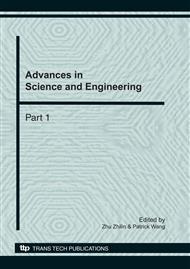p.974
p.979
p.985
p.990
p.995
p.1000
p.1006
p.1012
p.1016
Mechanical Design of Power Assist Exoskeleton Suit NES-3 Based on Backstay Cable
Abstract:
Exoskeleton suit is a kind of human-machine robot, which combines the human’s intelligence with the power of mechanism. NES-3 is a pure motor actuated power assist exoskeleton suit. A special mechanical design using backstay cable for transmission system is proposed in the paper. The design can depart the motor from its control object which make the leg of NES-3 is very light and reduces the power cosumption of the operator. An extend gas spring is used in the hip joint to conquer the rotation torque of the load. A compress gas spring is used in the knee joint which can make the knee joint bend naturally. The two gas springs also can save the operator’s power cosumption. Detailed mechanical design is showed in the paper and achieves its design objecttive.
Info:
Periodical:
Pages:
1016-1021
Citation:
Online since:
November 2010
Authors:
Keywords:
Price:
Сopyright:
© 2011 Trans Tech Publications Ltd. All Rights Reserved
Share:
Citation:


